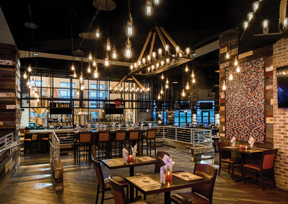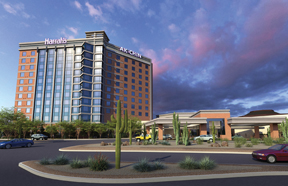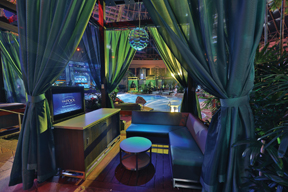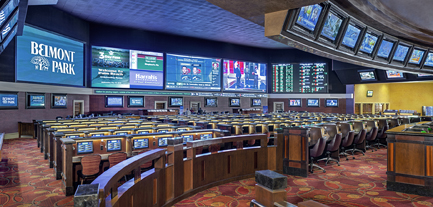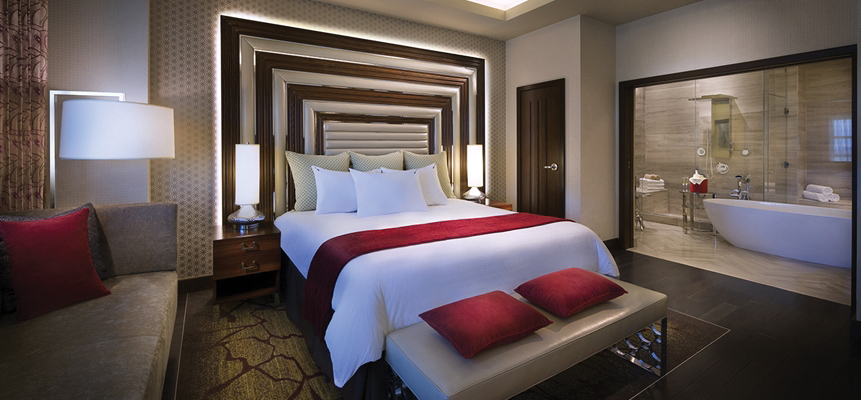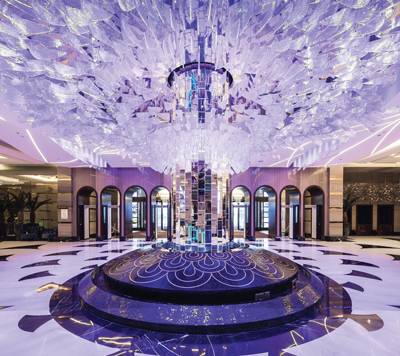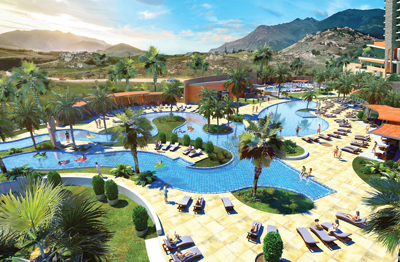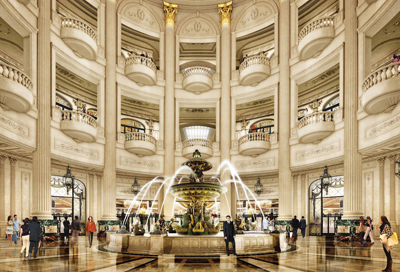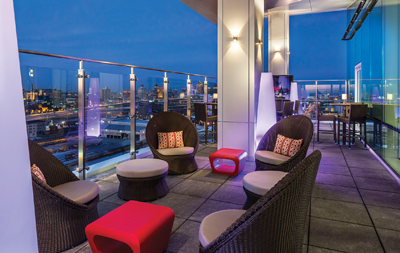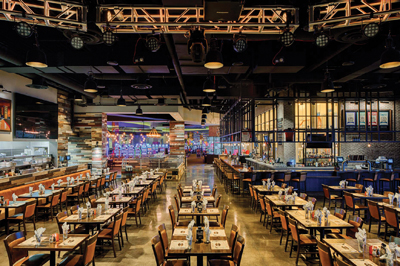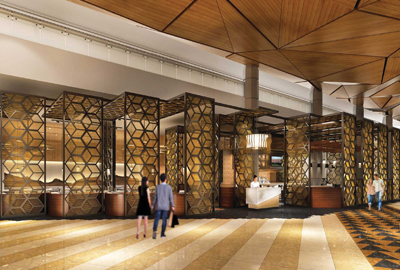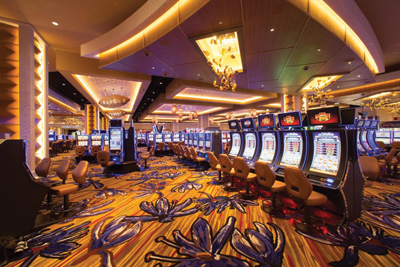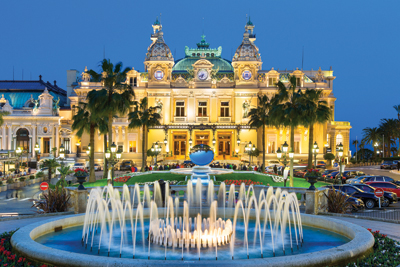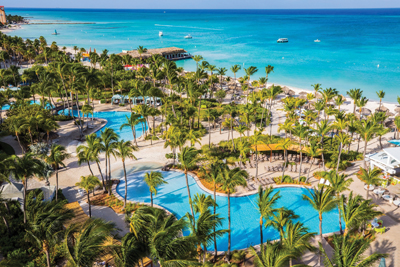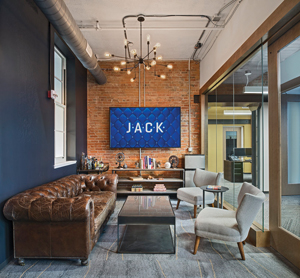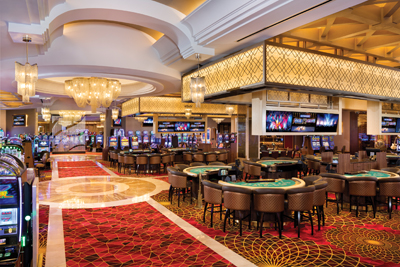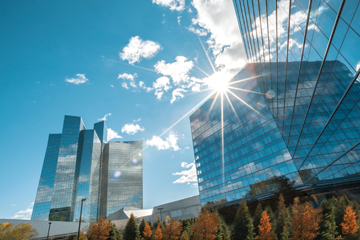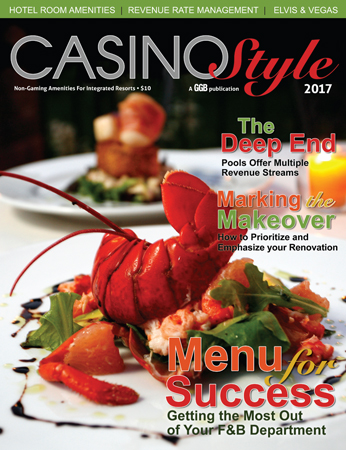
In today’s business environment, casino operators must find ways to enhance and maximize the appeal and gross operating income of their food and beverage venues. An effective food and beverage strategy should not only attract and retain gamers, but generate profit through proper pricing and planning.
Las Vegas Strip operators have clearly demonstrated how profit can be gleaned from F&B operations. Bars and restaurants today are a significant generator of EBITDA (earnings before interest, taxes, depreciation and amortization) for many Vegas resorts. Outside Vegas, many operators have discovered how well-run restaurants and bars with quality food offerings can benefit the bottom line.
While regional casinos differ substantially from those on the Strip, they can apply the same practices to turn a profit from dining.
The Product
To optimize guest count and the restaurant’s financial contribution, you must first determine the appropriate product. Too often, casinos add certain venues just because their competitors have them. In the past, the perfect formula for any casino included a coffee shop (not Starbucks, but your 24-hour café), a buffet, a steakhouse, and one or more quick-serve outlets.
But this formula may not be right for your casino. Even if it is, you must determine the ideal positioning for each of those venues. Should the steakhouse be operated in-house or leased? What grade beef should be provided? Such choices can have a significant impact on costs, and some casinos cater to enough premium customers that offering prime steaks at the premium steakhouse is appropriate. For most, however, it’s likely that spending extra money on prime beef doesn’t yield incremental benefit to the operation.
Depending on the casino’s proximity to the surrounding population, the best choice may be to convert the steakhouse into a branded mid-market operation such as Texas Longhorn or Outback. These products can attract people as stand-alone businesses. And the cost of goods is generally lower. Lower-cost steaks can yield incremental profit to the overall operation.
Buffets have long been a means of attracting people to a casino through price-driven meals. But buffets are usually inefficient and result in large amounts of food waste. Often casino management believes a buffet is necessary; they think the patrons love it. But are those patrons gamers or families coming in to enjoy the low price? Also, while customers may say they love the buffet, perhaps there’s an alternative solution they would enjoy even more, one that would turn a profit.
Only by evaluating the customer base, speaking with guests and evaluating the competition can the right product be determined. Buffets require a compelling environment and quality food in order to differentiate themselves from the competition. In regional markets, differentiation of the buffet may not be necessary, as the consumer may view it as more of a commoditized experience: quantity and low price.
The Positioning
Once you’ve decided the suite of food offerings, the next question is: How should they be positioned? All businesses compete using one of two basic strategies: a pricing strategy or a differentiation strategy.
Businesses that compete on price strive to reduce the costs of production to deliver a product or service at a lower price than the competition. This strategy works well for commodities in which the products are undifferentiated. Wheat and oil are commodities, and producers compete solely on price. Products that are clearly differentiated, through features or other unique elements, can command a higher price.
Some products and services can compete using either strategy. An example in manufacturing would be automobile products. A Kia automobile delivers basic transportation at a low price. A Mercedes Benz delivers the same basic function, but the product is differentiated so the manufacturer can command a much higher price. Kia employs a pricing strategy. Mercedes Benz employs a differentiation strategy. And both enjoy favorable reputations and robust sales.
This principle holds true for the casino industry as well. In Las Vegas, the Excalibur Hotel and Casino was designed from the ground up to compete on price. Its 4,000 rooms are relatively modest, all bathrooms contain shower stalls to reduce cleaning time, and its restaurants offer modestly priced fare with relatively few selections. It can thus deliver a vacation product priced lower than the competition and still make an attractive profit.
Wynn and Encore are designed with a wealth of amenities that differentiate them from the competition. Richly appointed rooms and suites, private gaming salons, stunning restaurants and a private lake all drive up the cost of doing business, but allow Wynn to command a much higher rate. Both Excalibur and Wynn deliver value to their customers.
The pricing strategy for casino restaurants should follow the positioning strategy of the overall facility. It would be as inappropriate to put an Outback Steakhouse at Wynn as it would be open a Del Frisco’s at Excalibur. Operators must know the positioning of their property to make ideal restaurant decisions.
The Pricing
Restaurant pricing takes two primary forms. The first, as described above, is determining the correct positioning strategy. The second? Identifying the correct per-item pricing.
Restaurateurs can leave money on the table by undercharging for certain items. For example, does your casual cafe charge $1.50 or $2.85 for a fountain soda? If McDonald’s charges $2.85 for a Coke or Sprite, so can you. By making such small changes, you can almost immediately realize substantial levels of profit.
In your fine dining restaurant, are you charging $2.50 for a fountain soda or $5? While $5 may be too much, bringing out an 8-ounce glass bottle of Coca-Cola can now garner the higher price point. Furthermore, the presentation—a beverage being poured from a glass bottle—enhances the customer’s perception of the overall dining experience.
The opposite of this strategy also applies. Customers can be turned off when venues apply sneaky pricing. If a customer goes to the casino’s three-meal unbranded restaurant, orders a $12 club sandwich and is charged $4.50 for a fountain soda, it could prevent them from returning in the future. To best set prices, undertake a comprehensive pricing-competitive shopping program. Look at restaurants in the surrounding areas where your core customers originate. By charging customers prices they expect, you’ll get fewer complaints and find ways to derive additional profit.
Alternatively, the best approach may be to set pricing for the buffet at $1 more than the competition—and then deliver a better experience.
Process & People
Restaurants’ primary operating expenses are comprised of two items: the people (employees) and the cost of goods sold.
Having the right people (and the right number of people) is crucial to the success of any restaurant, regardless of the price point. Operators must take the time to hire the best candidates and then train them. This goes beyond how to set a table. You must arm your employees with the right responses to customer complaints, and train your kitchen staff to consistently prepare the same dish utilizing the same ingredients and portion size.
The right people include chefs who can run a smooth kitchen, ensuring hot meals are served hot and cold dishes are served cold. Only by training employees properly can you implement the processes that will lead to success.
In addition to having the right people to provide a positive experience to the patron, the operator must also evaluate staffing schedules to ensure the correct number of servers and kitchen staff are on duty. Particularly with servers, this can entail a precarious balance of forecasting business trends. Restaurant servers don’t appreciate when too many others are on the same shift, as it’s difficult to make tips when they don’t have enough tables to cover. On the other hand, when management is afraid of overstaffing and overwhelms servers and bussers with too many tables, customer service goes down and the restaurant is usually dirty.
By understanding business trends, implementing tried-and-true training techniques, and using best practices to determine how many tables per server should be assigned, the operation can have an efficient and happy staff who will serve their customers with a smile.
Cost of Goods Sold (COGS)
Along with staffing, cost of goods sold makes up the largest expense in any restaurant operation. By gaining control of this single entity, operators can have a large impact on the bottom line.
Typically, COGS represents 30 percent to 35 percent of revenue. Premium steakhouses will likely be higher. Operations that are lower than 30 percent COGS are usually quick-serve outlets or specialty small-menu venues such as a pasta bar, Asian noodle bar or taco shack. When COGS rise above 35 percent, this can usually be attributed to three factors:
Loss Factor 1: Mismatch of Product Quality to Restaurant Positioning
Food is expensive. It’s not appropriate for a steakhouse that sells a steak for $25 to serve prime steak. Organic heirloom tomatoes should not be served on salads at the coffee shop unless you’re the premium casino in town and charge $18 for the salad.
A deep dive into matching the quality of product to the price of product can have an immediate impact on a restaurant’s bottom line.
However, the inverse applies as well. If a restaurant is positioned as a farm-to-table operation but is not performing well, the worst decision would be to stop buying local ingredients and revert to the Sysco weekly ingredient. That would mean a short-term gain for a long-term loss, as the quality of the food would then diminish.
In this situation, an analysis of why the restaurant is failing is more important. Perhaps it’s the wrong product for the market. Perhaps the restaurant isn’t being marketed to the local populace. Maybe the menu is too diverse and is resulting in too much food waste.
Loss Factor 2: Too Many Ingredients
In designing a menu, the focus should not only be on quality dishes that will resonate with the key demographic, but dishes that can share perishable ingredients.
While the Cheesecake Factory has a 100-item menu, you should not. Economizing ingredients is one of the greatest ways a restaurant can save on COGS. Unless the venue is a barbecue venue that roasts whole pigs on a spit, offering a BLT, a pulled pork sandwich, a bánh mì wrap and a club sandwich is inefficient. Choose one meat from the pig and make it apply to multiple items.
For example, the BLT could evolve into a Cuban BLT, where the pulled pork is used for the bacon, the bánh mì wrap is replaced with a Lechon Asado wrap, and the club becomes the “House Specialty Club” with pulled pork instead of ham. The menu has now been enhanced and four ingredients have been replaced with one.
Not only does this reduce food cost, as inevitably there will be less wasted, but the more frequently used ingredients will now be fresher, increasing the overall quality of the restaurant.
Alternatively, you can skip the pulled pork and offer lots of bacon—people love it.
Loss Factor 3: No Scale
All loading docks need a scale, and every non prepackaged item needs to be weighed! Seasoned food and beverage or hospitality professionals weigh everything—if you don’t, you could be overpaying.
When venues don’t weigh food deliveries, vendors can deliver light loads, or meat and fish can start to disappear between the loading dock and refrigerators. Requiring that food is weighed and quality checked is a standard operating practice that must be in place at every venue’s loading dock.
Fast Food on the Fast Track
When it comes to casino restaurants, variety is the secret sauce—hence the rise of fast-casual dining options.
The broad appeal of fast-casual and fast food spots make them essential to the F&B lineup. They’re inexpensive, consistent and familiar, and the portable meals can be enjoyed anywhere, from poolside to the slot floor.
Fast-food staple Subway has more than 40 casino locations. Liz Smethurst, global account manager for new business development, expects the number to grow. “We have a simple operation and no heavy equipment, like deep-fat fryers or grills. So decision-makers finding us an easy partner to work with.”
Along with speedy meal prep, Subway lets customers order exactly what they want, and prides itself on better-for-you meals on the go.
“A lot of casino patrons are looking for fresh, quick options,” Smethurst says. “One location at Foxwoods is by the bus pickup point. It’s an easy, convenient way to grab a sandwich for the ride after a day at the casino.”
Pie Five Pizza Co., a subsidiary of Dallas-based RAVE Restaurant Group Inc., is another fast-casual restaurant making inroads in the casino market. Its build-your-own approach lets customers design their pies, choosing among different crusts, sauces and toppings. The pies are baked in under three minutes, says Kurt Guttshall, a partner at Slice of the Pie LLC, which is leading the concept’s nationwide development. “So by the time you pay, your pizza is sizzling hot, ready to go,” he says. “There’s no delay. And no matter what you put on it, it’s $8.99.”
The restaurant has been a big hit at the Hard Rock in Biloxi, Mississippi. It’s Pie Five’s only casino location, but more are in the works.
“We had such a great response,” says Guttshall. “We’re anticipating the market to be really strong.”
Pie Five comes with low build-out costs and ovens that can crank out up to 500 pizzas per hour. At Hard Rock, Guttshall says, customers can use their player comps at the restaurant. “That’s huge for us, and it’s huge for them.”
The menus are usually the same at locations inside and outside casinos, but most in-casino eateries stay open later. Subway’s casino locations are open 24 hours, and Pie Five stays open until around 1 a.m. The restaurants have the added advantage of brand familiarity.
“Franchisees benefit from the fact that they’re joining a brand with national advertising campaigns, which keep the company name top-of-mind for consumers,” Smethurst says.
With familiarity comes consistency. Customers know what to expect from well-known restaurant chains, and they appreciate choices.
“When a guest visits a Subway restaurant, regardless of where it’s located, they’ll find their favorite subs,” says Smethurst. “Casinos show they’re responsive to customer needs by offering a better-for-you, portable food option. It’s smart business.”
Pie Five’s menu emphasizes pizza and salad, but Guttshall, who also operates non-casino locations in Mississippi, Tennessee and Alabama, says the company is testing wings and sandwiches too.
“No. 1, the price point is right,” he says. “And it’s so convenient. Casinos need different dining options to keep people on-property. If they’re staying four nights or seven nights, they don’t want to dine at the same place every day. Variety is really important.”
—By Erica Sweeney
